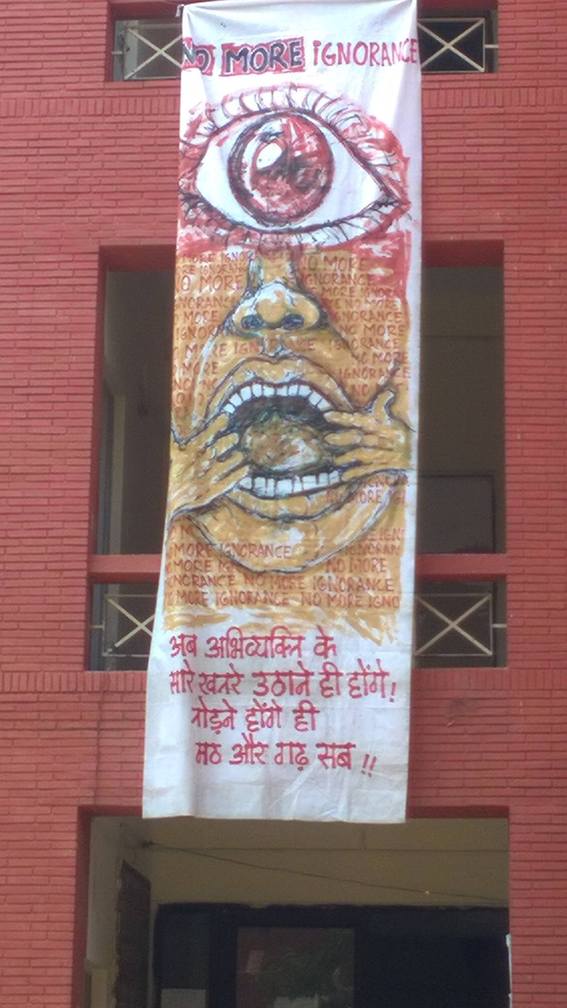
R
E
V N
E
X
T
Photographs of the recent student protests at the College of Art in New Delhi. Photo by Sukhmehak Kaur Sodhi.
Apathy best describes the pedagogical commitments of the stalwart art institutions in India, be it Santiniketan, JJ School of Art, MS University in Vadodara or the College of Art in New Delhi. Recently, the latter institution has been the site of student protest rallying against outdated curriculum, crumbling infrastructure and the lack of basic materials, equipment, student body representation and an aid committee for the redressal of student grievances. Discontent had been brewing for the past year and peaked in May when authorities at the College of Art failed to address charges of sexual harassment leveled against a faculty member by a student. Matters came to a head in late August when students were denied access to materials stored in the college’s printmaking department. On August 30, ten students staged a sit-in at the college to voice their frustration and present their demands to the administration.
For the past 17 days, over 200 youths—from a total student body of 1,200—have taken various measures in an attempt to get their voices heard by the college. They have submitted their written demands to the school authorities, reached out to the local artist community and other institutions through social media and marched to the Parliament building and the Chief Minister’s residence in New Delhi. On September 15, students reclaimed the College of Art by painting their protest on the exterior of the school building; this drew no direct response from the faculty or the administrative body, who, in turn, called the police to try to stop the students from painting further.
Not one faculty member has spoken out for the students as of yet. The principal of the college, SN Lahiri, has taken an extended leave of absence citing his wife’s ailing health, and the Governing Council has thus far ignored the students’ actions. One can almost smell the faculty and administration’s apathy turning to cowardice as the students are left to their own devices, and their demands are met with memos promising that the matter will be forwarded to concerned authorities in “seven days to a month,” which is, to put it plainly, bureaucratic hogwash.
Local artists, curators and writers have come forward in support of the students, by writing impassioned articles, participating in the protest marches, conducting open-air art workshops outside the campus gates, and spreading awareness of the protests. On the other hand, the mainstream media in India has yet to cover the protest. The students are at a loss in terms of how to proceed in the face of institutional silence and are torn between either taking up more militant action, such as barricading the college gates, or disbanding the protest altogether. But for the time being, a core group of student protesters is hunkered down outside the college, engaging in the age-old tradition of peaceful agitation by practicing the dharna, or the non-violent sit-in.
Photographs of the recent student protests at the College of Art in New Delhi. Photo by Sukhmehak Kaur Sodhi.





